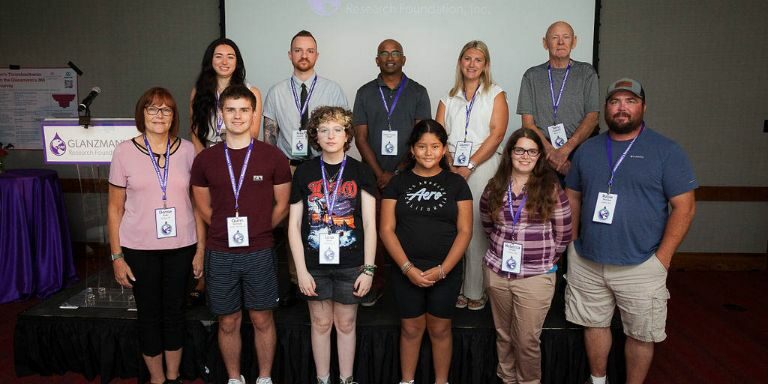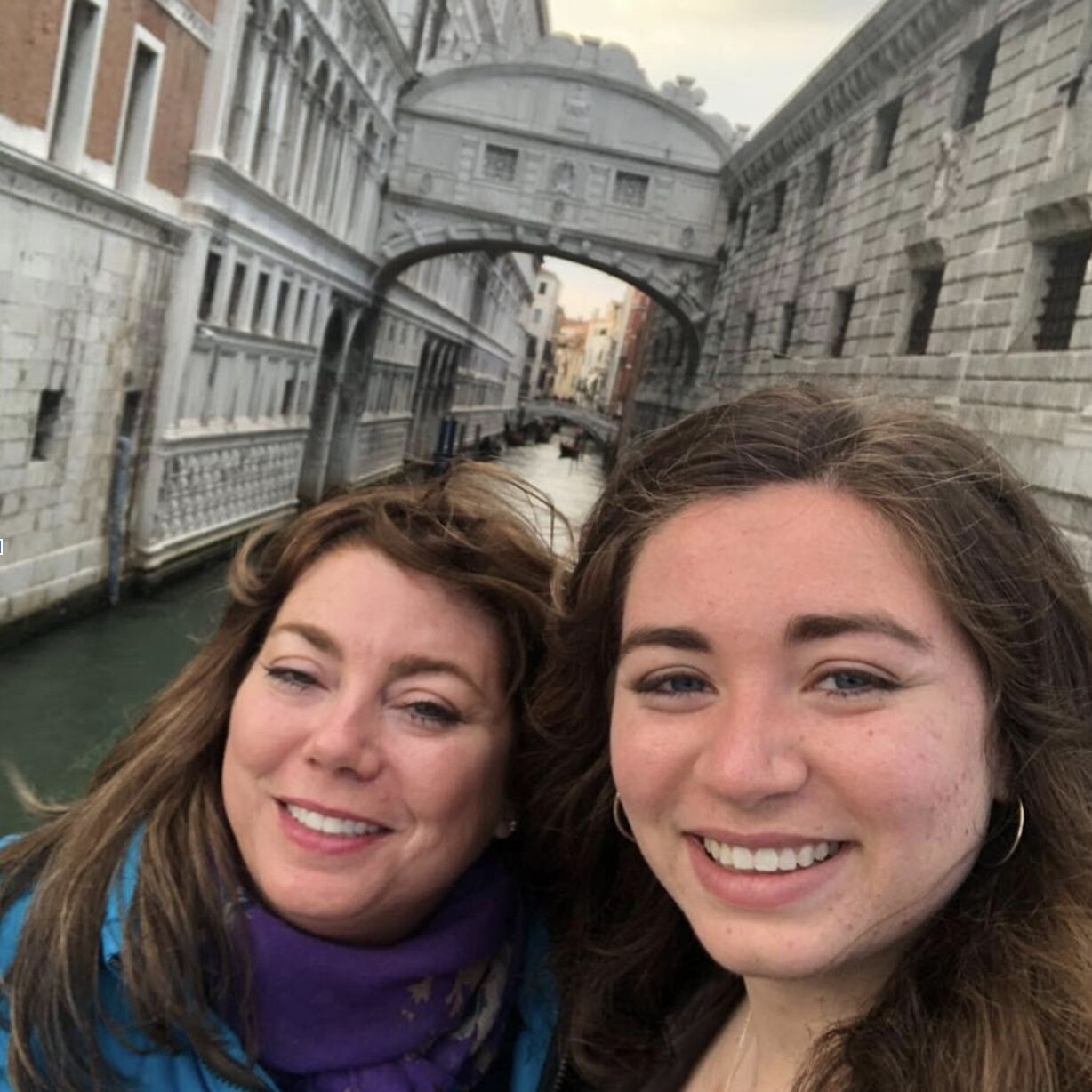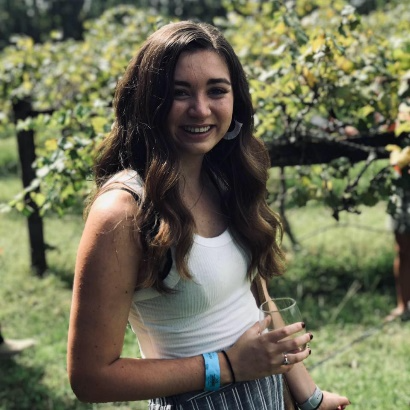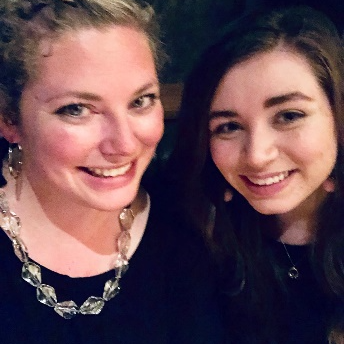About
Our Mission & History

The Glanzmann’s Research Foundation exists to:
- Increase awareness of Glanzmann’s Thrombasthenia
- Provide a network of support for families navigating a GT diagnosis
- Raise funding to find a cure

Helen Smith
Helen Smith had never heard of Glanzmann’s thrombasthenia before the birth of her daughter, Julia, in 1998. By Helen’s death in October 2019, however, she had become an expert on the disease and was often called on to share her knowledge.
Helen’s quest for a cure began shortly after Julia’s birth. Helen and her doctors knew something wasn’t right when Julia bled profusely after a tiny heel prick. She’d stay in the neonatal intensive care unit for the next two weeks.
The mystery continued after Julia came home from the hospital. Helen discovered the 5-week-old infant covered in blood and her crib sheets saturated in it after Julia had another horrific bleed all from a small scratch on her face.
There were only 200 cases of GT the year of Julia’s birth, and it took batteries of tests and six months before Julia’s diagnosis was reached. Helen’s mother, Anne Proctor, who was a lab supervisor at the Medical College of Georgia at the time, helped put a name to the perplexing disease after running every test available.
The diagnosis brought an urgency to Helen to find some way to help her daughter. “My beautiful little girl is always covered in bruises,” Helen wrote in 2013. “Now that she’s older there are not as many, but the first four years, especially the crawling and toddler years, she averaged about 50 bruises per extremity and always had finger shaped bruising on her torso from picking her up. Julia gets bruises on the bottoms of her feet, her palms, her lips and when she goes to the dentist her gums turn purple the following day.”
Helen’s search for information on GT led her to Dr. David Wilcox, a researcher at the Medical College of Wisconsin, who was focused on finding a cure for GT and needed funding. She founded the Glanzmann’s Research Foundation in 2001 to help Dr. Wilcox’s mission.
Helen didn’t wait until GRF had been designated as a 501(c)3 before she had created a website to provide resources for other families and health care professionals dealing with the disease. With the rarity of the disease, information was scarce. “At the time, I only knew of four other people in the world with whom I’d had contact with through email who had GT. I thought a website would be a good way to share any and all information I found with others and establish contact with other GT patients,” she wrote.
For Helen, the GT journey was personal. Not only did she want to help her own child, but she wanted to help others, and she was available to them whenever someone needed her. She fielded calls from all over the globe. She helped the panicked sister of a young girl with GT in Pakistan whose doctors needed information about stopping her nosebleed; she and Julia helped a 7-year-old boy in California who thought his nosebleeds would kill him.
She connected doctors in countries such as China, Pakistan, and India with physicians in the United States and other countries who understood GT and its treatment. Helen shared Julia’s story wherever she could, giving presentations to civic clubs, student groups from high schools to the Medical College of Georgia. She was interviewed for articles in magazines such as Popular Science and All You and a segment was filmed for the Discovery Channel’s Mystery Diagnosis, airing in 2010.
She contributed to and edited Hemophilia of Georgia’s bleeding disorder handbook. She met with lawmakers at all levels. She collaborated with Georgia Congressman Paul Broun and Phil Gingrey to establish a National Glanzmann’s Thrombasthenia Awareness Day and was recognized for her efforts in a speech on the floor of the House of Representatives. She also worked with Georgia Senators Saxby Chambliss and Johnny Isakson for an awareness day in the Senate. In 2007, the family met with President George W. Bush as part of Julia’s Make a Wish.
Helen’s work garnered her many awards including The Jefferson Awards, which is considered to be the “Nobel Prize” for public and community service. She was invited to speak at the awards’ event. She raised more than $300,000 for Dr. Wilcox’s research.
Not only did Helen found and operate the foundation, but she gave to many other organizations in her hometown of Augusta, GA. She spoke on behalf of the Shepeard Community Blood Center, served on the Children’s Medical Center’s family advisory board and was a member of the Sacred Heart Cultural Center’s Guild.
Bio by Charmain Zimmerman Brackett

Julia Smith
Julia Smith has been the face of the Glanzmann’s Research Foundation most of her life. It was her diagnosis of GT at the age of six months that served as the catalyst for the formation of the Glanzmann’s Research Foundation.
Julia’s mother, Helen Smith, used the knowledge she gained through the organization to help Julia learn to manage the disease and the frightening bleeds it caused. Helen treated many of Julia’s bleeds at home rather than taking Julia to the emergency room.
One early lesson Julia learned was not to panic while having a bleed. Helen wrote in 2013 that at Julia helped to console a 7-year-old boy in California who was afraid he was going to die from his nosebleeds. “He talked to me and also to Julia who was able to calm him down and let him know how she handles her bleeds ‘without panicking because panicking always makes you bleed more.”
Through the Make A Wish Foundation, Julia had the opportunity to meet President George W. Bush in 2007. Julia had several nosebleeds during the visit. They were brought on by the pressure changes during the flight to Washington, D.C. but they were contained with the medicines, clotting products, and packing supplies the family always had with them. The experience allowed her to educate the president about her condition and the precautions and treatments she goes through.
As she’s grown up, Julia has been able to take control over her health and learned to draw on the knowledge she’s gained over the years. Bleeds may happen at the most inopportune times, but she doesn’t let them stop her from living a full life. She even spent a semester abroad studying in Trujillo, Spain in 2019.
Julia graduated from Augusta Preparatory Day School in 2017, and she’s currently a pre-law student at the College of Charleston.
Bio by Charmain Zimmerman Brackett

Taylor Burtz
Taylor Burtz has been a part of the Glanzmann’s Research Foundation since its inception. “I’ve always been in the background,” said Taylor, who took over the foundation’s chairwoman and president after the death of Helen Smith in October 2019. “I grew up helping with it.” Taylor was 8 years old when her sister, Julia, was born. Julia was diagnosed with Glanzmann’s Thrombasthenia when she was six months old.
She saw firsthand the effects of GT and remembers some scary times. “She had three or four very, very bad bleeds,” said Taylor. “I remember sitting down to have a conversation that Julia might die.” From behind the scenes, she watched as her mother started a foundation and fought for a cure for the rare disorder. She saw how Helen brought together a community of people from around the globe.
Taylor said Julia was the only GT patient in Georgia when their mother began her work, and she’s watched it grow to a Facebook support group with more than 500 people. Over the years, Taylor has helped with many fundraisers and to spread awareness. Her senior project at Lakeside High School in Evans, GA was focused on GT awareness. She was also part of a Health Occupations Student Association group whose project was focused on GT. The group received second place. She said the placement was ironic because they were supposed to be highlighting a rarity within the medical community, but they were told GT was too rare.
After Helen’s untimely death, Taylor said it made perfect sense for her to take up where her mother left off and continue to fight for a cure for GT. “I always knew I would be part of the foundation. I never expected to step into a leadership role,” she said.
Taylor is a student at Brenau University, where she is majoring in business management with a focus in nonprofit leadership. She and her husband, Allen, have two children.
Bio by Charmain Zimmerman Brackett
If you have found the GRF because you or a loved one have recently been diagnosed with GT, we want to let you know that you are not alone. We have a vibrant community of GT patients and their caregivers who are ready to share their stories, experiences, and remedies with you.
Find out more about our online community.